1. Don’t call it a comeback
Despite President Trump’s promise to revive the coal industry, the US coal market is still shrinking. And the industry can’t look to exports to save it. November 2017 saw 20 nations and regions pledge to cease using coal for power generation by 2030, launching the Powering Past Coal Alliance at the United Nations climate change conference in Bonn. (We were especially pleased to see the UN’s moniker echo the fantastically successful advocacy movement that is Cascadia’s Power Past Coal campaign.) The US did not sign the Bonn accord, but Washington did.
Sightline’s Clark Williams-Derry analyzed what’s killing coal. (Hint: renewables and efficiency figure prominently!) Plus, 2017 brought a victory for coal mine cleanup.
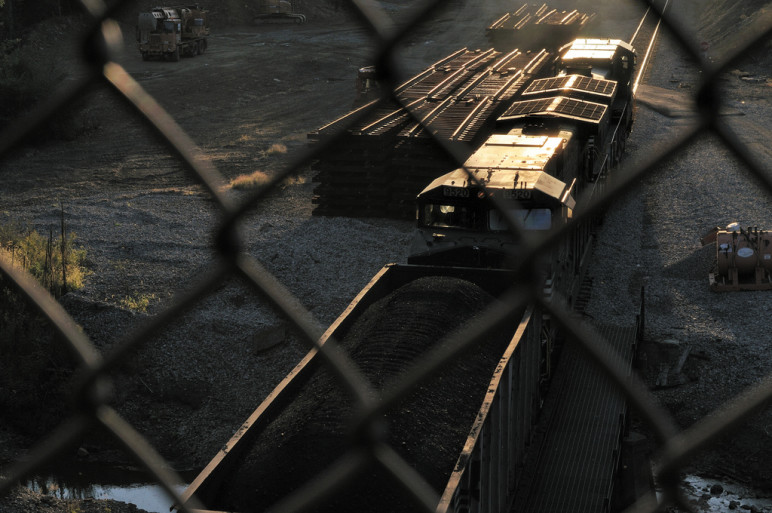
Coal Train by Steve Tatum used under CC BY-NC-ND 2.0
2. Coal exports bite the dust
The year brought a torrent of bad news for coal exports from the Pacific Northwest. In January, Washington’s outgoing state lands commissioner denied a key sublease for the last remaining coal proposal in the Northwest states: the Millennium Bulk Terminal planned for Longview. Later in the year, the state Department of Ecology denied key permits for the project. Ecology cited unavoidable harms in nine environmental areas, including air quality, rail safety, vessel traffic, and cultural resources. Further, the state said Millennium’s permit application failed to prove it would meet Washington’s clean water laws.
If anything, the project would have been even worse for water quality than the environmental impact statement found. In April, Sightline Fellow Michael Riordan published an analysis that showed the company’s calculations had grossly underestimated releases of fugitive coal dust, particularly coal dust that would end up in the Columbia River.

Scott Pruitt by Gage Skidmore used under CC BY-SA 2.0
3. Federal environmental agencies lose credibility
The Trump Administration has been, unsurprisingly, weak on enforcing environmental regulations. Indeed, rolling back environmental and public health protections has been one of a few areas where the administration has been efficient and successful, thanks to key appointments of fossil fuel industry insiders to the critical agencies. New Environmental Protection Agency (EPA) head Scott Pruitt provides the perfect illustration of the dangers of ”regulatory capture,” which happens when a government agency becomes controlled by the businesses it is supposed to oversee. The former Oklahoma Attorney General has deep ties to the fossil fuel industry, is a climate change denier, and has opposed the EPA’s authority to regulate air pollution throughout his career. After less than two months on the job, Pruitt led the EPA to go against its own scientific conclusions by refusing to ban a toxic pesticide that the agency proposed to ban in 2015. In October, he announced a plan to block scientists who receive EPA funding from serving as agency advisers. Pruitt wants to do away with the Clean Power Plan, among numerous other health and environmental safeguards. He has bolstered industry influence within the agency while freezing out long-time staffers. Pruitt recently took a four-day trip to Morocco, where he tried to sell the country fracked US gas. By the end of 2017, the avowed critic of the agency he now leads had alienated most of the agency’s staff.
In June, only four months into Pruitt’s tenure, Sightline published an article by Northwest EPA veteran Michael Cox that demonstrated first-hand the dysfunction within this critical protective agency. In an astounding report published by the New York Times in December, Cox was identified as one of several EPA employees who were targeted by an opposition research group that was “looking for information that could undermine employees who had criticized” the agency under Pruitt’s tenure.
4. Fighting fossil fuels at the local level
With waning trust in federal institutions like the EPA, and an administration obsessed with reviving coal, many have turned to state and local government powers to fight for a low-carbon future. The federal government submitted a formal notice in August that it intended to withdraw the United States from the Paris Climate Agreement. (At the time, Syria was the only other country to reject the agreement, but Syria announced in November that it would in fact sign on.) In response, fifteen US states including Oregon and Washington formed the bipartisan US Climate Alliance, pledging to reduce greenhouse gas emissions in a manner consistent with the Paris Agreement. Nearly 400 US mayors committed to upholding the goals, as did hundreds of businesses, universities, and faith organizations.
In the Northwest, cities that are big targets for the fossil fuel industry are taking proactive steps to protect air, water, and public health. After several years of citizen uproar over proposed fossil fuel plants, Tacoma, once known for the “Tacoma aroma” caused by the polluting industries that defined the city, passed a moratorium prohibiting new fossil fuel development. The City joined six other Washington cities and counties that passed related land use restrictions in 2015 and 2016. In Portland, a historic and more comprehensive ban on fossil fuel infrastructure was overturned in July by Oregon’s Land Use Board of Appeals, but only after two of the three voting Board members recused themselves. The City of Portland voted unanimously to appeal the decision, and the Oregon State Court of Appeals heard arguments in October. The appellate court has not yet issued a decision.
Northwest indigenous resistance to fossil fuels also intensified in 2017. In Tacoma, the Puyallup Tribe and allies are strongly resisting Puget Sound Energy’s proposal to build a liquefied natural gas (LNG) marine bunkering station at Tacoma’s Tideflats. The Quinault Indian Nation saw victories against oil export terminals at Grays Harbor that would devastate the tribe’s economy in the event of an oil spill. In British Columbia, many First Nations resisted the build-out of massive fracked gas export infrastructure. After the demise of one of the province’s twenty LNG export proposals, the Tsimshian raised a totem pole on Lelu Island to reaffirm their stewardship of its land.

Keep Our Kids Safe by Clean Air Kalama (Used with permission.)
5. Methane mayhem
Natural gas is primarily composed of methane, a much more potent greenhouse gas than carbon-dioxide, which seeps out or is intentionally released throughout its supply chain. Methane is also released directly into the atmosphere in the normal course of coal and oil extraction. The Obama administration passed rules that target methane emissions, such as requiring companies to capture methane instead of releasing it directly into the atmosphere. The Trump administration attempted to roll back or halt these rules, but Oregon and Washington were among fourteen states that took issue with EPA’s efforts to halt rule-making on methane. The Trump administration failed both in Congress and in court to roll back the rules, and the courts also ruled that Scott Pruitt could not delay enforcement. Unfortunately, these air pollution safeguards are still not in the clear, and EPA may have found a justification for stalling implementation of the rules.
In the Northwest, methane emissions played a big role in a setback to a proposed gas-to-methanol plant in Kalama, Washington. The Washington Shorelines Hearings Board invalidated two key permits for the proposal, ruling that the Port of Kalama and Cowlitz County had failed to fully evaluate greenhouse gas emissions from the project.

LNG by PROJens Schott Knudsen used under CC BY-NC 2.0
6. Trump administration puts bullseye on Coos Bay
The Pacific Northwest’s Thin Green Line has so far successfully fended off every liquefied natural gas (LNG) export facility proposed in the region. In 2016, both Oregon LNG and the Jordan Cove Export Project bit the dust. While the former project was cancelled by the project backers (after running into numerous obstacles), Jordan Cove was rejected by the Federal Energy Regulatory Commission (FERC) after project backer Veresen failed to demonstrate enough market demand to justify the project. In short, FERC pointed out that the agency is required to balance the need for a project against its adverse impacts, and Veresen had not demonstrated a need because they had not contracted any buyers for their proposed exports. FERC left open the possibility that the company could reapply for permits once it could prove significant demand for LNG.
Four months into the Trump administration, Gary Cohn, a top advisor and the director of the National Economic Council, said in April, “The first thing we’re going to do is we’re going to permit an LNG export facility in the Northwest,” noting that the location he was referring to had been “turned down twice already.” The White House soon confirmed that it was indeed pledging to support Jordan Cove, which the federal government had rejected only a year earlier. Oregon senators Ron Wyden and Jeff Merkley responded with a joint letter to Trump, advising the president to avoid political interference or undue influence on the project. Later in the year, Merkley came out in opposition of the project.
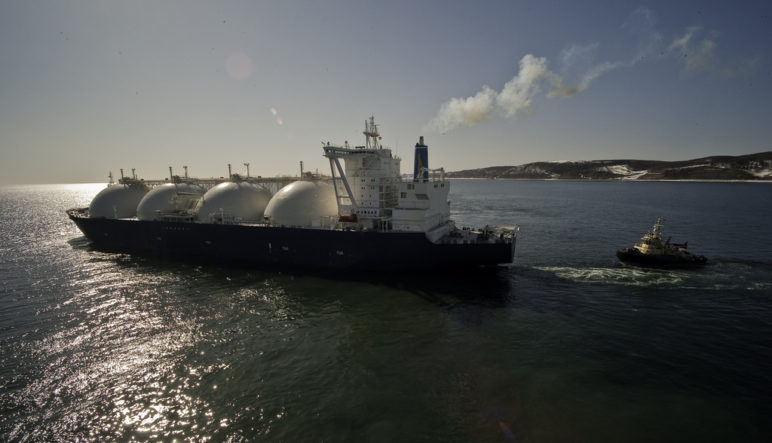
LNG tanker by Shell used under CC BY-NC-ND 2.0
7. Losses for LNG in BC
The year brought a bit of relief from the proliferation of fracked gas export terminals in Cascadia. Under the leadership of Christy Clark, British Columbia had embraced fossil fuels as the key to its economic future. Clark’s Liberal Party rolled out the red carpet for LNG producers like Chevron and Shell, and the province that enacted North America’s first carbon tax found itself faced with about twenty proposals for LNG export terminals. The proposals would have doubled BC’s carbon pollution and added about 3,400 mega-tankers to Pacific Coast waters, including waters around the San Juan Islands. But BC’s LNG industry has stagnated due to low market prices for natural gas and the exorbitant cost of building gas pipelines and LNG plants. In 2017, four BC LNG proposals bit the dust: Petronas-backed Pacific NorthWest LNG, Shell-backed Prince Rupert LNG, and Aurora LNG, all in the Prince Rupert area; and Malahat LNG, which was proposed for Vancouver Island.
We mapped all twenty LNG proposals in a March 2017 report, and also analyzed why BC’s LNG industry has stalled.
8. BC’s fossil fuel fights get political
In this year’s provincial elections, Clark’s Liberal Party took a stand against coal while standing by oil and LNG, and the New Democratic Party (NDP) took a stand against oil while remaining ambivalent about LNG and coal. All this in the context of a province where election spending was barely regulated and vast sums of foreign fossil fuel money regularly primed the pump of BC democracy. Still, in an upset victory the NDP won enough seats to reach a power-sharing accord with the Green Party. Fossil fuels were the biggest loser in BC’s elections and they yielded a downturn of fortunes for the big tar sands pipeline backed by Kinder Morgan. The project would nearly triple the pipeline’s existing capacity and drastically increase the risk of an oil spill in the Salish Sea. Tar sands oil, or dilbit, is particularly dangerous for ecosystems because conventional clean-up methods are not effective. Dilbit spills are also dangerous for first responders: in water, the dilbit separates into its primary components, including the carcinogen benzene, making rapid spill recovery a difficult proposition.

Oil train and underpass by Patrick Feller used under CC BY 2.0
9. Oil train project goes off the rails
Four years after it was proposed for Vancouver, Washington, the continent’s largest oil-by-rail project proposal is on the cusp of rejection. The Washington permitting agency charged with reviewing the project delivered a unanimous recommendation to spike the plan, which calls for receiving 360,000 barrels of crude oil per day by rail, storing it near downtown, and then shipping it out on the Columbia River. The scheme became a political lightning rod, shaking up local races in a series of bruising electoral fights that demonstrated the growing power of a progressive environmental majority in the region. The city council has recommended denying permits for the project and even re-zoned the city to prevent similar projects from appearing in the future. The final decision now rests with Washington Governor Jay Inslee who, by state law, has sole authority to approve or deny the project. He is expected to make a decision in January.

Port of Tacoma by Young Pony used under CC BY-ND 2.0
10. The Thin Green Line goes to the polls
In 2017, the regional fight over fossil fuels took on even greater importance as a range of relatively small-time local races smashed previous political spending records as the coal, oil, and gas industry dumped truckloads of cash in Washington—and for the most part came up short. In Kalama, Washington, Planning Commission member Mike Reuter won a surprise victory in his bid for the mayor’s office after running as an outspoken opponent of the Kalama methanol project. Don Orange won a seat on the Port Commission of Vancouver on an anti-oil platform, despite oil companies giving nearly $400,000 to his opponent. In Whatcom County, the County Council, which has prohibited new fossil fuel export developments, retained an environmental majority after four council seats went up for a vote this year. Read more in Sightline’s analysis of how Washington communities voted on fossil fuels in 2017.
At the close of 2017, the Thin Green Line is only growing stronger as local communities pick up the slack of regulatory agencies and a federal government that is out of touch with broad public support for clean energy. Heading into 2018, the Northwest shows no signs of slackening its opposition to dirty fossil fuels.

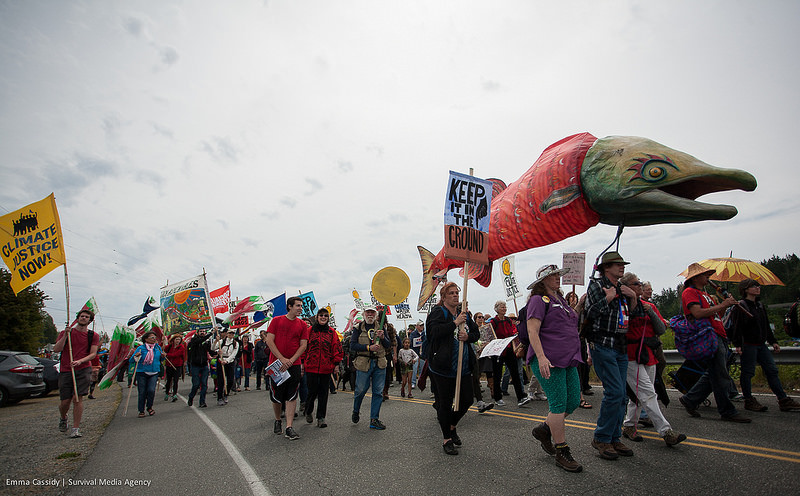
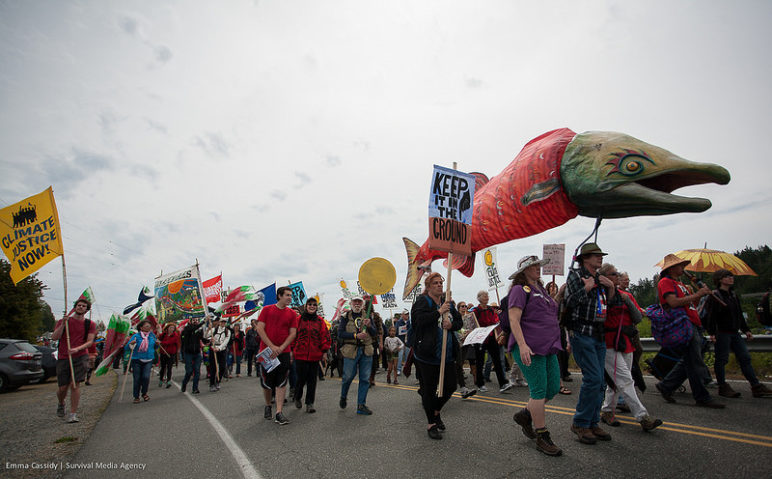








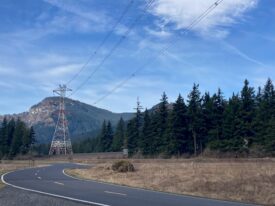

Don Steinke
Add some online comments to this story in the Columbian about the EFSEC recommendation. Otherwise the Columbian will think Cathryn and I are the only interested people.
https://www.columbian.com/news/2017/dec/19/efsec-sends-official-recommendation-on-oil-terminal-to-inslee/